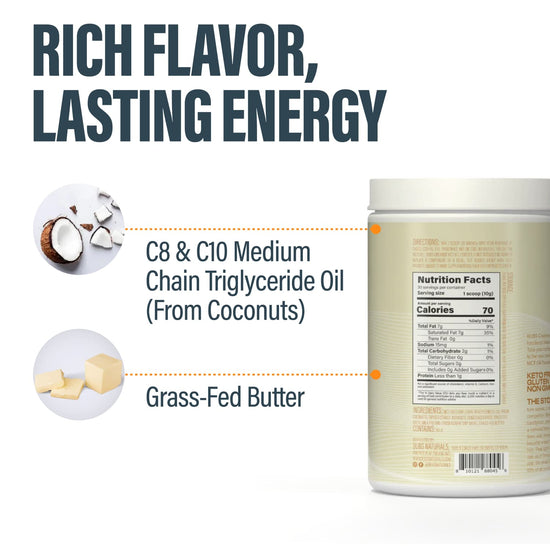Table of Contents
- Introduction
- Understanding Non-Dairy Creamers
- Shelf Life of Non-Dairy Creamers
- Factors Affecting Shelf Life
- How to Tell if Non-Dairy Creamer Has Gone Bad
- Special Considerations for Powdered Non-Dairy Creamers
- Alternatives to Non-Dairy Creamers
- Conclusion
- FAQs
Introduction
Have you ever found a bottle of non-dairy creamer lingering in your fridge, only to wonder if it’s still safe to use? You’re not alone! Many of us have experienced that moment of uncertainty, especially when it comes to foods with a shelf life that seems to defy logic. Non-dairy creamers, in particular, have become staples in many households, especially for coffee lovers looking for alternatives to milk. But how long is non-dairy creamer good for, and what factors affect its longevity?
As we navigate the world of food storage and expiration dates, understanding the specifics of non-dairy creamers is crucial. In this blog post, we will explore the shelf life of non-dairy creamers, both opened and unopened, discuss key factors that influence their freshness, and provide tips on how to properly store them. We will also highlight how to identify when your creamer has gone bad and share some best practices to ensure you’re using it safely.
By the end of this post, you’ll have a clear understanding of how long non-dairy creamers are good for, along with practical insights on how to make the most of your favorite coffee companion. Together, we'll explore storage methods, expiration indicators, and much more to help you ensure that your coffee remains delightful and safe to enjoy.
Understanding Non-Dairy Creamers
What Are Non-Dairy Creamers?
Non-dairy creamers are versatile, plant-based alternatives to traditional dairy creamers. They are designed to add creaminess and flavor to coffee, tea, and other beverages without containing any milk or dairy products. Common ingredients in non-dairy creamers include water, vegetable oils, sugar, and stabilizers like gellan gum and carrageenan. They come in both liquid and powdered forms, each with their unique storage requirements and shelf life.
The Appeal of Non-Dairy Creamers
The appeal of non-dairy creamers lies not only in their dairy-free nature but also in their variety of flavors and extended shelf life compared to traditional dairy creamers. For those who are lactose intolerant, allergic to dairy, or following a vegan diet, non-dairy creamers present an excellent alternative that allows them to enjoy creamy beverages without discomfort.
Shelf Life of Non-Dairy Creamers
Unopened Non-Dairy Creamer
An unopened bottle of non-dairy creamer can typically last much longer than one might expect. Most brands indicate a "best by" date on the packaging, which can be seen as a guideline for peak freshness rather than an expiration date. Generally, unopened non-dairy creamers can last up to nine months to a year when stored in a cool, dark place, such as a pantry or cupboard.
Opened Non-Dairy Creamer
Once opened, non-dairy creamers require refrigeration to maintain their quality. Typically, after opening, they should be consumed within two weeks to a month. It’s important to note that how long the creamer remains good can depend on various factors, including the specific ingredients used and how it’s been handled.
The Importance of Proper Storage
How you store your non-dairy creamer plays a significant role in how long it stays fresh. Here are some best practices to ensure your creamer lasts as long as possible:
- Refrigerate After Opening: Always place your opened non-dairy creamer in the refrigerator. This slows down the growth of bacteria and helps preserve its quality.
- Store in a Stable Temperature Zone: Try to avoid storing creamer in the refrigerator door, where temperatures fluctuate. Instead, keep it in the main compartment, where it’s cooler.
- Seal Tightly: Always make sure the cap is screwed on tightly to minimize exposure to air and potential contaminants.
Factors Affecting Shelf Life
Ingredients Matter
The type of ingredients in a non-dairy creamer can affect its shelf life. For instance, creamers made with higher amounts of sugar and preservatives may last longer compared to those with fewer additives. It’s essential to read the label and understand what’s in your creamer.
Storage Conditions
As mentioned earlier, how you store your non-dairy creamer can significantly impact its longevity. Store it away from direct sunlight and heat sources to prevent degradation.
Handling and Usage
How often you open the container and the conditions you expose it to can also affect freshness. If the creamer has been left out at room temperature for extended periods, it may spoil faster.
How to Tell if Non-Dairy Creamer Has Gone Bad
Knowing how to identify when your non-dairy creamer has gone bad is crucial for both safety and taste. Here are some common indicators:
1. Smell
The first sign of spoilage is often the smell. If the creamer has developed an off or sour odor, it’s best to discard it.
2. Texture
Check the texture of your creamer. If it appears lumpy, curdled, or has separated, these can be signs of spoilage. Liquid creamers should be smooth and creamy.
3. Taste
After smelling and visually inspecting the creamer, you can also do a small taste test. If it tastes off, bitter, or sour, it’s time to toss it out.
4. Expiration Date
While the "best by" date is not an absolute indicator of spoilage, it can serve as a guideline. If your creamer is past this date and you notice any of the above signs, it’s best to err on the side of caution.
Special Considerations for Powdered Non-Dairy Creamers
Shelf Life of Powdered Creamers
Powdered non-dairy creamers generally have a longer shelf life than their liquid counterparts. When unopened, they can last for up to two years. Once opened, they should ideally be consumed within three to six months for the best quality.
Storage Tips for Powdered Creamers
- Keep Away from Moisture: Moisture can cause powdered creamers to clump and potentially lead to spoilage. Store them in a cool, dry place and ensure the container is tightly sealed.
- Avoid Temperature Fluctuations: Like liquid creamers, powdered creamers should be kept away from heat sources and direct sunlight.
Alternatives to Non-Dairy Creamers
If you find that non-dairy creamers don’t suit your taste or dietary needs, there are plenty of alternatives. Some popular options include:
- Almond Milk: A popular choice, almond milk adds a subtle nutty flavor to coffee.
- Oat Milk: Creamy and naturally sweet, oat milk has gained popularity in recent years.
- Coconut Milk: This option lends a tropical flavor and is perfect for those who enjoy coconut.
- Homemade Creamers: Making your own non-dairy creamer with ingredients like coconut milk, almond milk, and natural sweeteners is a great way to customize flavors and ensure freshness.
Conclusion
Understanding how long non-dairy creamer is good for and how to store it properly can significantly enhance your coffee experience. By following the guidelines outlined in this post, you can enjoy your favorite creamers without the worry of spoilage. Remember to check the smell, texture, and taste before using, and always adhere to proper storage practices.
As we continue to embrace healthier choices and alternatives in our diets, non-dairy creamers provide a flexible option for those seeking a dairy-free lifestyle. By being mindful of their shelf life and storage requirements, we can ensure that our morning cups of coffee remain delicious and safe to enjoy.
FAQs
1. How long can I use non-dairy creamer after the expiration date?
While it’s generally safe to consume non-dairy creamer a few days past its expiration date, it’s crucial to check for signs of spoilage, such as changes in smell, taste, or texture.
2. Can non-dairy creamers be frozen?
Freezing non-dairy creamers is possible, but it may affect the texture once thawed. If you choose to freeze, make sure to thaw it in the refrigerator, not at room temperature.
3. Are there any health benefits to using non-dairy creamers?
Non-dairy creamers can be a good alternative for those with lactose intolerance or dairy allergies. However, it’s essential to read the ingredient list, as some brands may contain added sugars and preservatives.
4. Can I make my own non-dairy creamer at home?
Absolutely! Homemade non-dairy creamers can be made using simple ingredients like nuts, coconut milk, or oats blended with water and sweeteners. This allows you to customize the flavors and avoid preservatives.
5. What’s the best way to store opened non-dairy creamer?
Opened non-dairy creamers should be stored in the refrigerator in their original container, tightly sealed. It's best to keep them in the main compartment to maintain a stable temperature.
Written by:

Butter MCT Oil Creamer
BUBS Butter MCT Oil Creamer (formerly Halo Creamer): Scientifically-Backed Brain and Body Fuel
BUBS Butter MCT Oil Creamer is your go-to for clean, fast-acting energy and focus, no crash included. It blends creamy grass-fed butter with fast-acting MCT oil powder (C8 and C10) to kickstart your day and keep you sharp. The MCTs go straight to work, giving your brain a quick boost while the grass-fed butter supports digestion and gut health.
Together, they help curb cravings, keep you feeling full longer, and support steady energy throughout the day—perfect for fueling your mornings or powering through the afternoon slump.
Starts at $37.00
Shop

